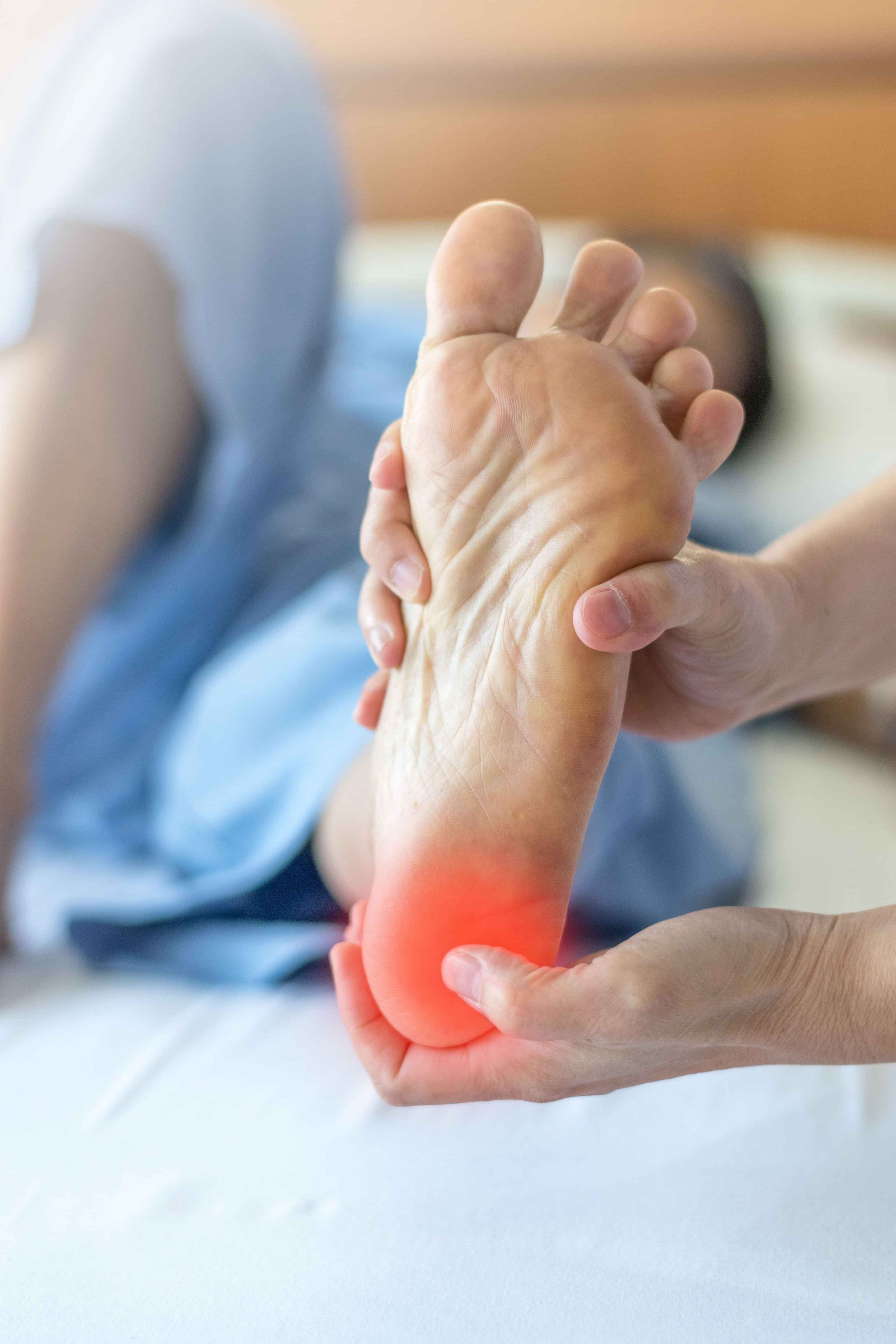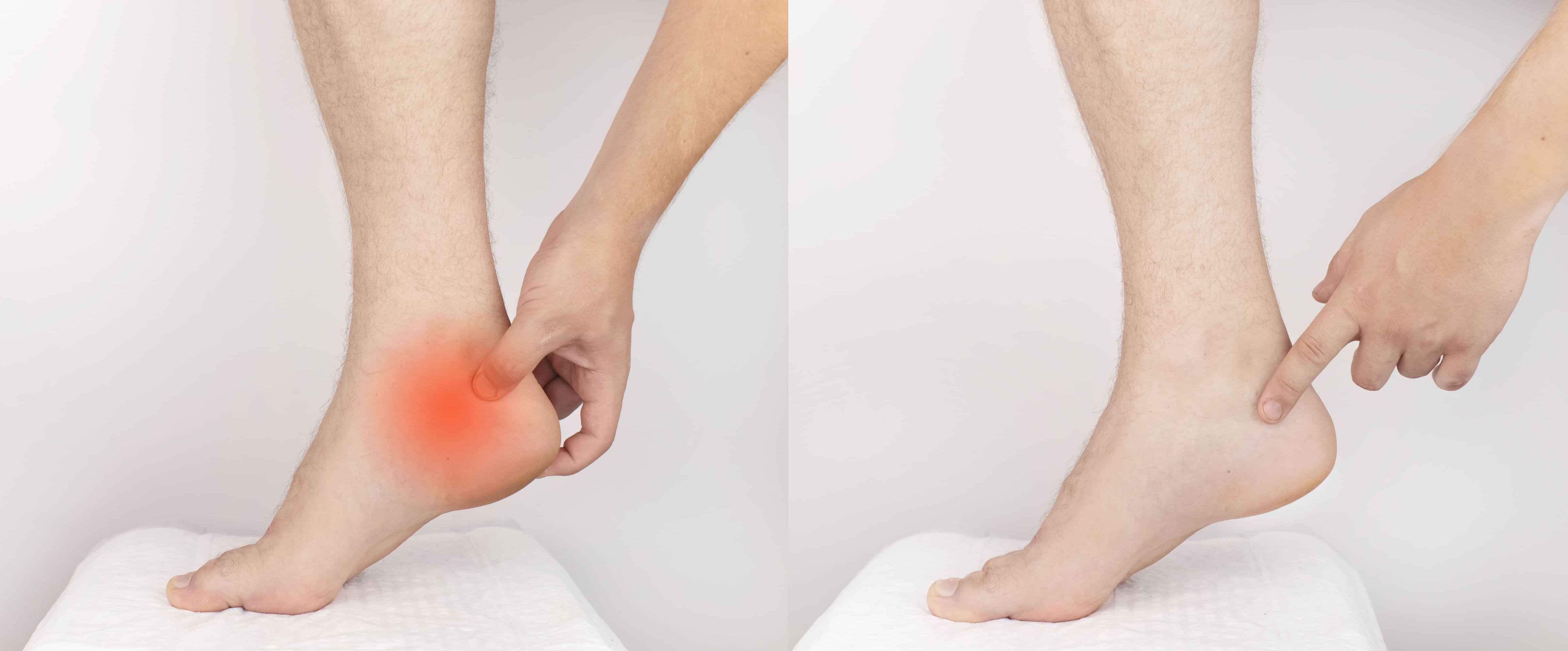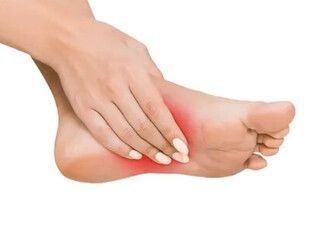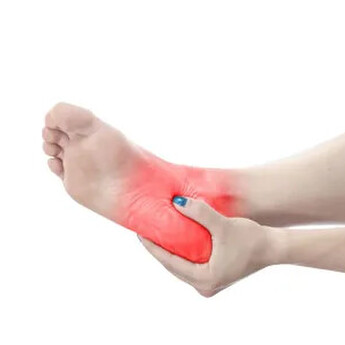Conditions Treated
We are your foot musculoskeletal experts, with the most comprehensive treatment programmes for treating all varieties of heel pain.
Plantar Fasciitis
Plantar fasciitis, affecting around 10% of the population at some point in their lives, manifests as heel and underside foot discomfort. Characterized by pain in the plantar fascia—a supportive tissue for the foot arch—this condition ranges from occasional flare-ups to enduring issues. Often felt as a sharp bruising sensation when pressure is applied to the inner heel, plantar fasciitis commonly causes intense pain during the initial steps in the morning, gradually easing as the foot warms up. While X-rays may reveal a bone spur, it typically indicates excessive stress from the plantar fascia rather than directly causing the pain, showing calcification in the affected area.

Heel Spur
A calcaneal spur, commonly referred to as a heel spur, emerges as a small bony growth beneath the calcaneus. This formation initiates due to prolonged stress on the heel bone, leading to calcium buildup beneath the heel and the eventual formation of a spur-shaped deformity. Some theories suggest that this bony development serves as the body's mechanism to safeguard the arch ligaments from persistent stress by depositing calcium, thereby enhancing stability in the plantar fascia.
Achilles Tendinopathy
Achilles tendinopathy is a condition more precisely defined by pain, stiffness, and reduced strength primarily centered at the back of the heel bone. Typically, it occurs suddenly due to direct trauma or excessive overuse, resulting in significant inflammation that manifests as redness, heat, swelling, and discomfort during movement.


Sever's Disease
Sever's disease, also known as calcaneal apophysitis, stands as a prevalent source of heel pain among children aged 7 to 14. Primarily affecting active youngsters engaged in sports like soccer, rugby league, AFL, netball, basketball, rugby, and hockey, this condition more commonly affects boys than girls. It typically emerges just before puberty.
Tarsal Tunnel Syndrome
The Tarsal Tunnel constitutes the space formed between the inner ankle bone (medial malleolus) and a structure that secures tendons in place across the inside of the ankle and foot, known as the flexor retinaculum. Tarsal tunnel syndrome, a distressing foot ailment, occurs when the posterior tibial nerve gets compressed or pinched, resulting in symptoms that may manifest anywhere along the nerve's route. In its typical presentation, this syndrome often leads to aching pain in the inner ankle region.


Tibialis Posterior Tendinopathy
The tibialis posterior tendon plays a crucial role in the heel and ankle, originating deep within the calf and extending behind the inner ankle bone (medial malleolus) towards various points on the inside and underside of the arch. Throughout daily activities, this tendon endures significant tension and strain as it supports the foot arch, prevents excessive flattening (overpronation), and aids in the foot's propulsion. During running or high-impact activities, the demands on this tendon intensify, requiring even greater effort to support these movements.


